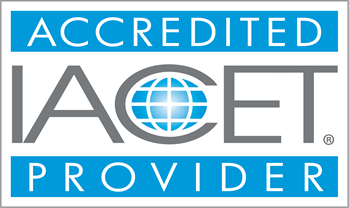Course Modules - (16)
-
1) Introduction to OSHA
-
2) The OSHA Inspection Process
-
3) How to File a Whistleblower Retaliation Complaint
-
4) How to Read OSHA Standard
-
5) How to Read the OSHA Standards
-
6) Introduction to OSHA Power Point Presentation
-
7) Workers’ Rights PSHA
-
8) Student Handout Packet
-
9) NMSA landing screen
-
10) Job Safety and Health
-
11) Brief Tutorial on Completing the OSHA Recordkeeping Forms
-
1) Access to Vessels
-
2) Access to Cargo Spaces and Confined Spaces
-
3) Access and Guarding of Drydocks and Marine Railways
-
4) Working Surfaces
-
5) Guarding of Deck Openings and Edges
-
6) Ladders
-
7) Work Surface Hazard Results in Slip and Fall
-
1) Introduction
-
2) Shipboard Electrical
-
1) Maritime Industry
-
2) Shipyard Employment “Tool Bag” Directive
-
3) 29 CFR Part 1915, Subpart B, Confined and Enclosed Spaces and Other Dangerous Atmospheres in Shipyard Employment
-
4) Shipyard Employment: Walking-Working Surfaces and Personal Fall Protection Systems Standard
-
5) Maritime Industries: Shipyards
-
6) Fire Watch Safety during Hot Work in Shipyards
-
7) Shipyard Employment Safety Statistics
-
8) Safely Performing Hot Work on Hollow or Enclosed Structures in Shipyards
-
9) Hazards Associated With Shipbreaking
-
10) Guidelines for Safely Entering and Cleaning Vessel Sewage Tanks
-
11) Eye Protection against Radiant Energy during Welding and Cutting in Shipyard Employment
-
12) Hazards Associated with Spray Painting in Shipyard Employment
-
13) Evaluation of Fire and Rescue Services
-
14) Deck Barge Safety
-
15) Ergonomics for the Prevention of Musculoskeletal Disorders
-
16) Fire Watch Safety during Hot Work in Shipyards
-
17) Aerial Lift Fall Protection Over Water in Shipyards
-
18) Fire Watch Safety during Hot Work in Shipyards
-
19) Ventilation in Shipyard Employment
-
20) Hazards during the Repair and Maintenance of Refrigeration Systems on Vessels
-
21) Safety While Working Alone in Shipyards
-
22) Understanding Your Role as a Shipyard Competent Person
-
23) Evaluation of Fire and Rescue Services
-
24) Evaluating Shipyard Competent Person Programs
-
25) Eye Protection against Radiant Energy during Welding and Cutting in Shipyard Employment
-
26) Shipyard Machinery and Power Tool Safety
-
27) Working with the Shipyard Industry
-
1) Introduction
-
2) Fire Safety Plan
-
3) Precautions for Hot Work
-
4) Fire Watches
-
5) Fire Response
-
6) Fixed Fire Extinguishing System Hazards on Board Vessel
-
7) Land-Side Fire Protection Systems
-
8) Training
-
9) Fire damages boat at shipyard in Campbell Industrial Park
-
10) Preventing Fires on Vessels
-
11) Fire Protection in Shipyard Employment
-
12) Toxic and Hazardous Substances
-
1) Housekeeping
-
2) Lighting
-
3) Utilities
-
4) Working Alone
-
5) Vessel Radar and Communication Systems
-
6) Lifeboats
-
7) Medical Services and First Aid
-
8) Sanitation
-
9) Control of Hazardous Energy (Lockout/Tags-plus)
-
10) Retention of DOT Markings, Placards, and Labels
-
11) Motor Vehicle Safety Equipment, Operation and Maintenance
-
1) General requirements
-
2) Pilot ladder Rigging Procedure , Pilot Boarding requirements , Combination ladder
-
3) Safe set up of pilot ladders
-
1) Hazard Assessment
-
2) PPE Selection
-
3) PPE Selection > Head Protection
-
4) PPE Selection > Eye and Face Protection
-
5) PPE Selection > Foot Protection
-
6) PPE Selection > Hearing Protection
-
7) PPE Selection > Respiratory Protection
-
8) PPE Selection > Hand and Body Protection
-
9) PPE Selection > Lifesaving Equipment and Personal Flotation Devices
-
10) PPE Selection > Personal Fall Protection Equipment
-
11) Employee Training
-
12) Cleaning, Maintenance and Replacement
-
13) 5 Types of Life Jackets - What Type of Personal Flotation Device is the reight one?
-
1) Overview
-
2) Horse Scaffolding
-
3) Independent Pole Wood Scaffolds
-
4) Independent Pole Metal Scaffolds
-
5) Painter's Suspended Staging
-
6) Wood Trestle and Extension Trestle Ladders
-
7) Aerial Lifts
-
8) Scissor Lifts
-
1) Inspection
-
2) Ropes, Chains, and Slings
-
3) Shackles and Hooks
-
4) Chain Falls and Pull-Lifts
-
5) Hoisting and Hauling Equipment
-
6) Use of Gear
-
1) Entry into Enclosed Spaces on Ships - Part 1: Awareness, Hazards & Safety Preparationz
-
2) Overview
-
3) Confined or Enclosed Spaces and Other Dangerous Atmospheres
-
4) Pre-Entry (Planning) >> Testing the Atmosphere
-
5) Initial Entry Testing >> Warning Signs and Labels
-
6) Initial Entry Testing >> Visual Inspection
-
7) Initial Entry Testing >> Ventilation
-
8) Cleaning and Other Cold Work
-
9) Cleaning Preparation
-
10) Cleaning Operations
-
11) PPE Selection
-
12) Hot Work (including Welding, Cutting and Heating)
-
13) Preparing Space for Hot Work
-
14) Surface Preparation
-
15) Toxic Cleaning Solvents
-
16) Chemical Removers
-
17) Mechanical Removers
-
18) Flammable and Combustible Liquids
-
19) Painting and Other Coatings
-
20) Enclosed/Confined Spaces Entry Procedures
-
1) Overview
-
2) Chemical Cargo Barges
-
3) Flammable and Combustible Liquid Cargo Barges
-
4) Dry Bulk Cargo Barges
-
5) Common Hazards
